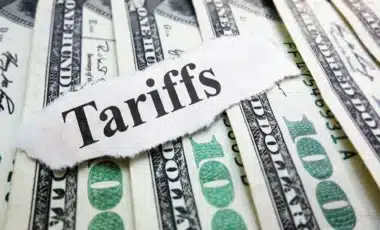President Trump’s recent tariff measures are poised to impact lower-income Americans more than others, contradicting his earlier promises to ease the financial burden on struggling households.
The tariffs are expected to raise the cost of everyday essentials, including children’s shoes and fresh produce, making it harder for those with limited disposable income.
According to a report by NBC News, these price increases will place a heavier financial strain on families who already spend a larger portion of their income on basic necessities, further deepening economic challenges for the most vulnerable.
The Magnitude of the Tariffs
The newly imposed tariffs target goods primarily imported from countries such as Vietnam, Sri Lanka, Cambodia, and China. Products from these countries, which are typically low-cost items purchased by lower-income consumers, will now face tariffs of over 40%, with Chinese imports subjected to more than 70% in additional fees.
These taxes will raise prices across various sectors, including apparel, footwear, and groceries, further stretching household budgets.
The impact of these tariffs will be felt most acutely by lower-income households. According to an analysis by the Budget Lab at Yale University, these families could see a reduction in their after-tax income by up to 4%, a burden three times greater than that faced by wealthier households.
This is due to their higher spending on imported goods, including basic necessities such as food and clothing.
Tariffs are a regressive tax, they hurt lower-income families more than they do upper-income families
explained Ernie Tedeschi from the Budget Lab. He further noted,
Tariffs are essentially a consumption tax, they’re a tax on spending, and lower-income families spend a greater share of their income than higher-income families do, so they’re just more exposed to tariffs.
The price of various everyday products is expected to rise as a result of these tariffs. Retail prices for leather goods like shoes could increase by 18%, while apparel is expected to see a 17% rise. The grocery bill for many families is also expected to increase, with rice and fresh produce projected to rise by 10% and 4%, respectively.
Collectively, these price hikes could cost the average American household an additional $3,800 annually, placing more strain on lower-income households.
The Broader Economic Impact of Trump’s Tariffs
The broader economic effects of these tariffs could contribute to an economic slowdown, as rising prices could lead to reduced consumer spending. Retailers are already preparing for the possibility of lower demand, with stock prices for discount retailers such as Five Below and Wayfair declining sharply.
Blake Harden, vice president for international trade at the Retail Industry Leaders Association, stated,
The early indications are these tariffs are going to be very serious for retail – He further explained,
The margins are not large in retail. They’re pretty thin to begin with.
The downturn could trigger job cuts, particularly in sectors that rely heavily on consumer spending. The footwear industry is already feeling the strain, with Matt Priest, president of the Footwear Distributors and Retailers of America, expressing shock at the impact :
These are just astronomical numbers that our members have never had to deal with and are far worse than we are anticipating – He also noted that,
I’ve been on the phone pretty much all night long because of the repercussions about how this will impact American jobs, American consumers.
Some products, especially low-cost shoes, may no longer be worth producing due to the new tariffs.
I think there are going to be a number of products that just aren’t worth making anymore, because it’s not profitable – said Priest.
It’s going to be very limiting to what’s available to American consumers in the footwear space.
The Impact on Low-Income Households
The consequences of these tariffs are expected to be felt most acutely by lower-income families, who are more likely to purchase the kinds of affordable goods that are now subject to higher tariffs. Kimberly Clausing, a nonresident senior fellow at the Peterson Institute for International Economics, emphasized,
At the lower end, they need every dollar for the things that they’re doing, like food and bus rides and shelter.
For example,
If you have a household income of $100,000 and the tariffs cost you $2,000, you’re going to feel bad about that, it’s 2% of your income. But imagine you have an income of $20,000 and the tariffs cost you $800 — that’s 4% of your income and that is going to feel much more harmful.
This highlights the disproportionate burden that low-income families will face.
Despite the administration’s claims that these tariffs are necessary to bring manufacturing jobs back to the U.S., the economic consequences may ironically worsen the conditions for the very people they were intended to benefit. Clausing noted the irony of the policy, stating,
People higher in the income distribution can weather these storms without going hungry or being evicted, but many Americans live much more economically precarious lives – She went on to explain,
One of the big ironies of this policy is that Trump’s populism was really meant to speak to those left behind, and it’s going to fundamentally make their lives much, much worse.









